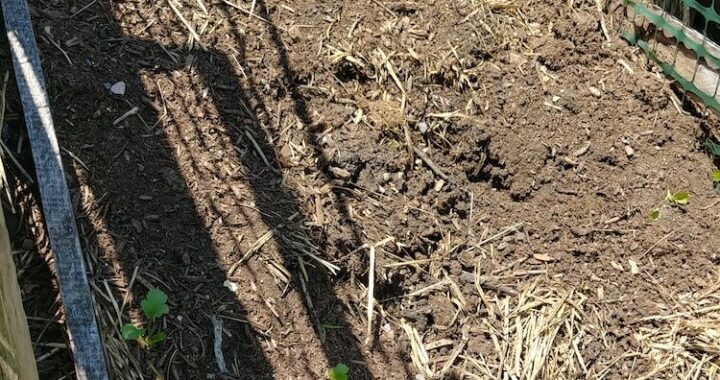
We have compost from last year’s efforts by Cecily, who generously took over the composting at the farm for 2022.
Last week was International Compost Awareness week (May 7-13), so the main topic of our Raised Bed Gardening meeting was, of course, composting. What is it? Why do it? How does it happen? Our Garden Mentor Dan Gallagher, master gardener and master composter, answered these and other questions in his talk.
So, what is compost? It’s just plant matter after it has decomposed. Simple, right? Well…mostly simple. There’s a bit more to it. Ok, then why do it? The main reason we discussed was to create our own microbiology for the plants in our gardens to thrive on. Most fertilizers are not able to be used directly by plants, they are meant to break down and be consumed by the microbiology in the soil, which the plants then get the nutrients from. So we want the microbiology to be healthy and plentiful. And one way to do that is by composting our plant waste. (Another reason to compost is to save yourself the cost of buying it. Good compost can be pretty pricey.)
As for how it happens, composting is essentially decomposition and it is done by insects and the microbiology. Insects are easy to remember, but it’s vital to remember that the microbiology is hard at work.To start composting, Dan says to make a pile that is 3 parts “browns” (eg, dried leaves) and 1 part “greens” (eg, uneaten vegetation). The “greens” are high in nitrogen and “browns” are high in carbon/carbohydrates. The finished compost will end up approximately 10:1. Two important environmental factors are moisture and temperature; 50 degrees is when the microbiology comes alive and starts working.

Dan and I found this 2-inch long grub in the farm’s compost. He wouldn’t let me kill it (even though it looked like it was from a sci-fi movie that doesn’t end well for humans) and thinks it is a June beetle grub, which is mostly harmless.
Dan also said that the two best times to start composting are in the spring, when cleaning up the garden/yard, and in the autumn, after the leaves have fallen. Then, whenever you add anything to a compost pile, it has to be covered up by new browns, even by pulling back a top layer and adding small amounts of green under that and recovering. Periodically the compost will need to be flipped, so that it breaks down more evenly. And whatever way you compost, plan on 2 piles: one that is curating and one that is ready to use.
With low temps in the 30s forecasted for this week, most of the raised bed gardeners held off on planting our warm-weather plants last weekend, but we are planning on it at our next meeting Sunday afternoon after the Chicken Run. I can’t wait to get my cucumbers and zucchini in!
If you have any questions about the Raised Bed Gardening program you can reach out to us at info@strongfarm.org.
-Erika

